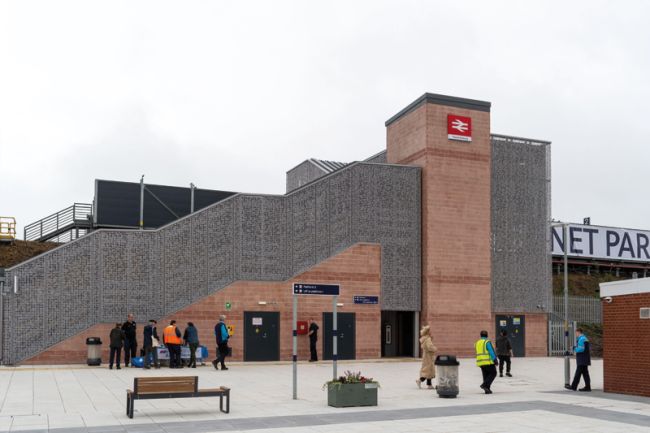Implementation: How to make big LTP visions a reality
We at Steer are turning our minds to what a new generation of LTPs could look like.

In the absence of the Department for Transport’s new Local Transport Plan (LTP) guidance we at Steer are turning our minds to what a new generation of LTPs could look like and, more importantly, what it will take to make them a success.
It has been many years since guidance from central government was last issued and, in that time, many local authorities have let their LTPs (which are a statutory requirement) become dated. New LTPs will need to reflect the post-COVID landscape, as well as address the challenge of how local transport can contribute to meeting the nation’s commitment to net zero by 2050.
This time around ‘vision-led’ LTPs offer the opportunity to paint an inspirational picture of how transport will shape local areas and communities for years to come, but how can we make sure such plans come to fruition?
Integral to any LTP is a short to medium implementation plan that looks three to seven years ahead. Developing the strategy might take much of the overall time and effort and be the thing that garners most political and public attention, but without the implementation plan there is no LTP.
An effective implementation plan needs to be deliverable. This means that it needs to affordable, offer value for money and garner support both political and public support. Most importantly however it must tangibly support the realisation of the long-term strategy, with short and medium term goals and strategies working in tandem with long-term ones.
To ensure the success of the next generation of vision-led, evidence-based LTPs, what is required to implement them?
Timely, sensible and pragmatic: how to implement an LTP
There is a need to be able to start delivering on Day One. Effort is needed to develop the specification and business cases of early years interventions in parallel to the development of the LTP strategy, the implementation plan document and other supporting documentation.
There is also a need to think to later in the delivery plan period and in particular, ensuring that there is a pipeline of deliverable schemes. Having a programme of scheme development work as an integral part of the overall delivery plan will create an on-going pipeline. While most authorities do not have the benefit that mayoral combined authorities have of the five-year funding settlements, a programme of scheme development will put authorities in the best place to avail of those funding opportunities as and when they become available.
But bear in mind that things change – there’s a need to be prepared for the implementation timescales of some schemes to slip. Judicious over-programming allows the best use to be made of both revenue and capital resources that are available.
Keep the implementation plan up-to-date – things change, which means there’s a good chance that the implementation plan will become dated faster than the strategy that it supports. There’s a need to review and if needed, update the implementation plan on a shorter cycle than reviewing and refreshing the strategy. Monitoring the implementation of the plan and evaluating the benefits of what has been implemented are integral to any review and refresh process.
A balanced programme will have a mixture of small, medium and larger scale interventions. Larger scale interventions are promoted because it is believed that they will have the biggest impact, but by their nature delivery risks of larger scale interventions are greater. A balanced programme allows progress to be made realising the strategy while larger scale interventions are developed. Smaller scale schemes are what is needed to in-fill the programme if there is slippage and they can be used to take up ad hoc or unforeseen funding opportunities.
There’s a need to stay on the right side of having an ambitious but implementable plan versus one which is over-optimistic and undeliverable. As well as potentially spreading development resources too thinly, a plan that has too much stretch and is not delivered can actually undermine confidence with the whole strategy. On the other hand, being too cautious and conservative will result in underachievement when it comes to meeting LTP key performance indicators. There’s a careful balance to be struck.
Understand which interventions can be implemented independently of each other and which have interdependencies. An implementation plan where there are strong dependencies between different interventions, or a reliance on third party interventions (from Network Rail or National Highways, say) will also be a plan that has high risks.
There is a need for a proportionate approach to developing business cases, including the modelling and appraisal is part of the overall business cases work. Work with those responsible for assurance and funding approval and ensure that there’s a shared understand of what is needed to make a case. Our experience is that a laser focus on developing a proportionate approach at early stages can pay dividends later.
Don’t get too hung up about the potential mismatches between appraising schemes in a future scenario that has been developed following Transport Analysis Guidance (TAG) assumptions on future demand growth and specifications of do-minimums, and what a vision-and-validate scenario might imply. A good business case and assurance framework should be able to accommodate these differences and allow progress to be made.
Realising a strategy requires change. The LTP implementation plan is the first step in delivering change. Integrating the development of the implementation plan in the overall LTP work programme offers the opportunity to reap benefits through being able to move quickly from strategizing to implementation. There is no right or wrong way of doing this, and each authority will need an approach that reflects their circumstances. At Steer, we bring experience of working alongside authorities to plot out a way forward and develop an implementation plan which will be the first step in realising the overall strategy.
How can Steer help?
Steer is ready to aid all local authorities in ensuring that their LTPs take full advantage of the innovative transport services available and the benefits they can offer. Our expertise can help you plan an implement an LTP that is vision-led, innovative, resilient, evidence-based and low carbon.
Steer is offering a free facilitated workshop session tailored to help any local transport authority to assess what’s needed for your LTP, regardless of what stage you’re at in the process. To talk through your local transport plan requirements, do not hesitate to get in touch with Nicola Kane (North), Simon Statham (Midlands) or Steven Bishop (South).
























